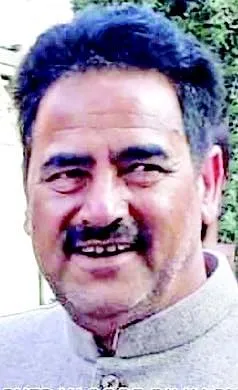Srinagar: Javid Ahmad Tak, a resident of Bijbehara in south Kashmir, has become an inspiration to many disabled people in the Valley. Despite being physically challenged, Tak has not let his disability define his life. Instead, he has used it as a motivation to achieve his goals and help others in need.
Tak was not born with any disability. In 1997, he was hit by some unknown gunmen who had come to kidnap his uncle. The bullets hit him and damaged his spinal cord. That unfortunate incident left him partially paralyzed.
The circumstances could not put Javid Tak down, the positive reinforcement helped him to emerge with a strong sense of self-worth, confidence, and the determination to keep going even when things are tough.
Tak founded the Humanity Welfare Organization Helpline, a non-governmental organization that works towards the betterment of disabled people in Kashmir. The organization’s aim is to provide support, care and rehabilitation services to people with disabilities. Tak believes that everyone, regardless of their disability, has the right to live a dignified life and be a productive member of society.
His NGO is also running Zebunnisa Helpline School in Bijbehara to provide education to the disabled children.
He has been collecting public donations to run his NGO. “People are generous enough to help our NGO,” he said.
Tak said that his job is not to “cure” the learning disability, but to give disabled children the social and emotional tools which they need to work through challenges.
“In future, facing and overcoming challenges, providing them an opportunity for earning livelihood, giving a disabled children hope, and confidence can help them grow stronger and more resilient,” said Tak.
Tak has earned many accolades for his inspirational bravery.
He also received Padma Shri from the President of India. Despite being a disabled for the last 24-years, he is on forefront to help the needy in Kashmir.
“I along with my team have helped people during Covid-19 pandemic. Also, we provide financial support including medicines, eatables to the needy disabled people. Besides helping disabled people, we have helped widows and children of downtrodden families as well,” Tak said.
Tak’s life is not defined by his disability. He is a reason for happiness and liveliness to many disabled people including neglected disabled children in Kashmir. He helps the disabled population in Kashmir, gives them education and makes them self-reliant.
He said that after identifying the families and proper verification they provide necessary things at their doorsteps.
Tak has also done master’s in social work from the Kashmir University in 2006.
“I have experienced many barriers in my life. But I couldn’t stop and moved ahead. Today, I am helping disabled children and fighting for their rights. I was also selected for MBBS in Iran,” he said.
He said that disabled people in the valley are facing a lot of issues and society hardly accepts them.
“ Society easily judges a person. People refuse to accept a person who looks, walks, or even talks differently. But the time is changing, our children who hardly used to continue studies are now graduates. Our two disabled students are even studying in Delhi University,” he said.
According to the 2011 census, students with disabilities number about 40 lakh in the age group of 5-19 years.
There are more than 1 billion disabled persons in the world which is about 15% of world population, in other words nearly 1 of every 7 people is born disabled. In India out of the 121 crore population 2.68 crore are disabled which is 2.21 % of the total population.
The disability among children is a matter of concern. In India 20.42 lakh children aged 0-6 years are disabled. It means that one child in every 1000 children in the age group of 0-6 years suffer from some type of disability. Literacy among urban persons with disabilities is more than that of rural ones. In rural areas 45% disabled persons are literate while as it is 67% in urban areas.






